
6 minute read
Coming Home by Boat
by Petra Jacob
In Upper Bavaria in Germany clocks tick differently: there are still many small dairy farms and cows that come by boat from their alpine pasture in autumn
Advertisement
For two hours, onlookers and a Korean television team have been waiting at the Königssee (King's lake) boat dock not far from Berchtesgaden It is mid-October, the time when the cattle return from their summer pastures These alpine pastures are idyllically situated on the southern shore of the Königssee and Obersee But they are difficult to access The Königssee meanders like a fjord through the valley and is surrounded by steep rock faces, no path leads along the shore and the paths over the mountains are laborious The easiest way for humans and animals is over the water
At last Almost silently, the "seacows" and their farmers approach over the water. The transport ship is called Landauer and has a flat floor, flat boarding and a railing made of wooden slats The load of Pinzgauer cows and the people in traditional costume are a feast for the eyes The landscape around it is also magnificent: the trees of the mountains wear autumn colors, the mountain peaks are reflected in the crystal-clear lake. The Königssee is located in Berchtesgaden National Park, the only German national park in the Alps
Almost an hour ago, humans and animals departed from the Salet, which is also the final stop for the electric boats that transport hikers and visitors to the southern shore of Lake Königssee This year, around 250 000 people have come to Salet over the lake Most of them get out and walk to the mountain chalet of Salet, where there are cows during the summer There is now a ‘closed’ sign as the cows left a few days earlier
The mountain hut and pasture Fischunkelalm is another good hour's walk away on the southern shore of the Obersee. This Saturday mid-Octoer the cows were milked one last time at five o'clock in the morning At eight o'clock, farmer Hans Leitner locked the door of his hut Family and helpers who have worked on the alpine pasture during the summer, accompany the twelve cows along the rocky and very stepped hiking trail along the Obersee. For the calves the way is too strenuous, they come by boat over the Obersee At the Salet boat dock, they are all loaded together for the boat trip across Lake Königssee The boat is pushed by a motorboat and was built especially for the cattle transport The animals buck and don't like to get onto the boat voluntarily Cows can swim, but their instinct tells them that they would have no chance if the boat capsized There are steep walls and the lake is 190 m deep and very cold It needs many experienced hands and good persuasion
Fischunkelalm is open from mid-May to mid-October. The mountain pasture has been around for over 500 years! Since 1486 it has belonged to the Leitner family. Their small farm with 6 hectares of grassland is located about 2 km outside of Berchtesgaden Farmer Hans Leitner (52) comes to the alpine pasture every day, brings fresh bread, takes care of repairs and helps with catering when there is a large crowd. At peak times, the ships sail up to 4000 people a day across the Königssee and up to 300 guests are entertained on the Fischunkelalm Popular are bread and butter (4 €), milk (glass 2 €), buttermilk (glass 2 50 €) and the cheese platter
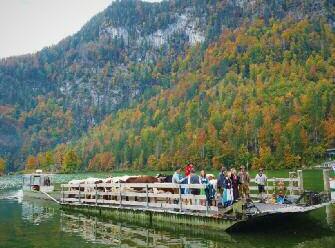
For the alpine cows, 25 hectares of pasture are available; the freshly milked milk is used to make butter, buttermilk and cheese At 10 o'clock the first guests appear, around 5 pm the last leave Since the Fischunkelalm is located in Berchtesgaden National Park, overnight stays are not allowed and all visitors come and go with the ferries
It is 8 km across the Königssee before the cows have solid ground under their hooves again. Upon arrival on the mainland and behind a cordoned-off area, the cattle are decorated It consists of crowns of spruce and fir trees, whose branches are decorated with handmade flowers and rosettes made of colorful wood shavings The cows are only decorated when the summer on the alpine pasture has been accident-free Staying on an alpine pasture is not without danger: a cow can fall or give birth to a dead calf When such an accident happens, the animals are quietly brought from the pasture
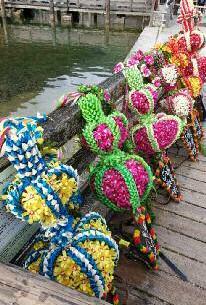
If everything went well during the alpine season, the cows wear magnificent crowns and garlands around their stomachs – as on this Saturday – on their one-hour march back to their home farm. Friends, neighbors and farmers are joined by many tourists who – before boarding their boat across the Königssee – do not want to miss this spectacle. Not every cow likes to have a crown tied on her head and as soon as the herd is released, they storm away Past souvenir shops, where the cow is marketed in every way and with cowbells for 520 € a piece for sale The cows dash past restaurants, pretzel and meatloaf stalls to the main road, where they bring the busy traffic to a standstill
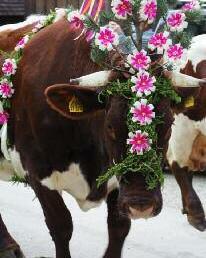
Now you have to trust in drivers and animals and have good cowherds and helpers, because barriers or warning signs, as they are common in Switzerland, for example, can not be found here Many drivers get out of their cars and take the opportunity to take pictures. The date of the cattle drive was deliberately not announced, says Christina Stanislaus from the Bergerlebnis Berchtesgaden office It would only attract more onlookers, she says, and they often do not know how to handle livestock, which could endanger a safe cattle drive
Unusually, in the case of the Fischunkelalm (at 619 m), the valley operation is at 800 m above sea level and thus higher than the mountain pastures itself The march with boat trip – the last part through a residential area, then steep serpentines up through a forest –takes a total of over four hours This makes the tour certainly one of the most elaborate cattle drives in Bavaria At the very top of the forest is the Leitner farm, underneath lush, very steep grassland. Here the young cattle graze during the summer and hay is made. "Around three cuts are possible," says farmer Hans Leitner The cattle will be outside a few more weeks, then they will go indoors for the winter
With the animals back on the farm, the Leitners also start delivering the milk to the Berchtesgadener Land dairy in Piding, 26 km north of Berchtesgaden. His Pinzgau cows produce an average of 4000 to 5000 litres of milk per year This is not a lot, because they only get grass, no concentrated feed, says Hans Leitner Small farmers like the Leitners are in good hands at the Berchtesgadener Land dairy "Small family farms with an average of 27 cows are owners of the dairy The farmers work along the northern Alpine ridge all the way to below the Zugspitze, Germanys highest mountain
From the Zugspitz region, 145 farmers supply around 20 million litres of milk to the Berchtesgadener Land dairy, which is half of the milk produced in the region. Typical representatives are Annemarie Noder (34) and her brother Josef Jais (38), who each run a farm outside Mittenwald Annemarie Noder is a lively woman and the head of the local womans farmer association She is trained as a bank clerk and farmer She runs 230 laying hens, some sheep, guest rooms and eight dairy cows with offspring Her brother Josef runs the family business with 25 dairy cows and 50 young cattle, he also works in forestry. Both welcome the fact that even the smallest mountain farmer can deliver milk to the Berchtesgadener Land dairy. Every other day the milk truck comes and collects the milk
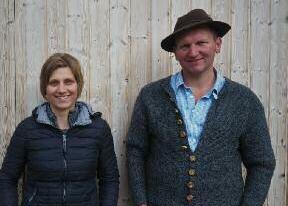
"A woman in the village has only two cows and delivers only about 80 litres of milk," says Josef Jais He delivers 500 l every two days, his sister's farm around 300 litres They are also satisfied with the milk price, which is currently at 49 40 C/l "The price does not fluctuate so much, as a farmer you have more planning security and there was even a bonus during Covid," explains Josef Jais
Three-quarters of farmers in the Zugspitz region work part-time, according to Lisa Loth from the Zugspitz Region Economic Development Agency. The official economic output is only 2 %, she says.
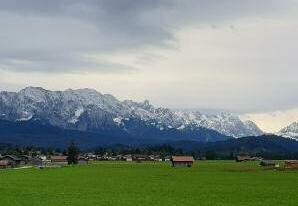
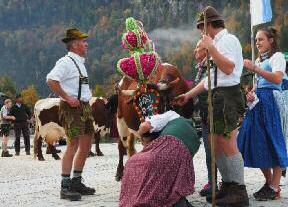
"But the contribution for society is priceless," she emphasizes. There is, for example, the care of a special landscape with humpback meadows with the traditional barns where hay is stored
Once a week, she posts something agricultural related on social media, because, “they have the highest clicks," she says
Information and visiting the region: www.berchtesgaden.de/en/home https://bergbauernmilch.de/en https://zugspitz-region.de (also in English)

BOOK – 200 Farmers of Scotland – NOW £20 when ordering direct
Every farmer has a story to tell This book covers the diverse range of Scottish farmers and crofters from those farming the rugged hills of the Highlands to the sandy loams of the Lowlands. From owner occupiers, tenant farmers, share farmers, crofters, farm managers, starter farmers, to new entrants, farming from 10 acres to 31 000 acres – the people are as diverse as the landscapes and environment in which they work Scotland covers 7.8 million hectares, of that 5.7 million or 73% is farmland, or 79% if common grazing is included.
This book has photographs of 200 farmers and interviews with 109 from across the country from Orkney to Berwick and Durness to Stranraer within its 288 pages It is available from individual bookshops and farm outlets or direct from the author To order direct: drop an e-mail to Eilidh MacPherson at editor@farmingscotland com or private message on facebook – farmingscotland com for details



